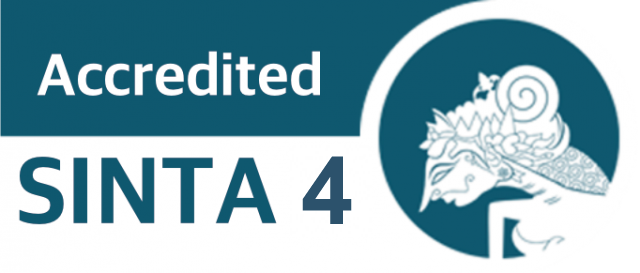Development of Lucky Draw Chemist Based on the Website as Learning Media to Improve Students Analysis Skills in Chemical Bonding Material
DOI:
10.29303/jpm.v19i6.7953Published:
2024-11-26Issue:
Vol. 19 No. 6 (2024): November 2024Keywords:
Analysis Skills; Chemical Bonding; Lucky Draw Chemist; Validation; WebsiteArticles
Downloads
How to Cite
Downloads
Metrics
Abstract
The difficulty in understanding chemistry material generally is caused by the process of conveying information that is not optimal between teachers and students. Therefore, an effort is needed to optimize chemistry learning in the classroom. Learning media is required to improve students' analysis skills in the continuity of a good learning process. There are many types of learning media, one of which is in the form of a website. This study aims to develop the Lucky Draw Chemist media based on the website to improve students' analysis skills in chemical bonding material. This study refers to a 4D design with three stages: define, design, and development. The target of this study is the feasibility of the Lucky Draw Chemist media based on the website based on expert assessment (Chemistry lecturers and chemistry teachers). The results showed that the validity obtained in each assessment aspect was ≥ 4, with the category "good" being valid. Based on these results, the Lucky Draw Chemist media based on the website developed is feasible to be implemented in school learning on chemical bonding material for grade XI high school students.
References
Khoirurrijal, Fadriati, Sofia, Makrufi, A. D., Gandi, S., Muin, A., & Suprapno. (2022). Pengembangan Kurikulum Merdeka. Malang: Literasi Nusantara Abad.
Setiawaty, B. T., Sunarno, W., & Sugiyarto. (2019). Profil Kemampuan Berpikir Analisis Sekolah Menengah Pertama di Surakarta. Universitas Sebelas Maret, 234-238.
Mahyastuti, I., Dwiyana, & Hidayanto, E. (2020). Kemampuan Berpikir Analitis Siswa dalam Memecahkan Masalah Matematis. Jurnal Pendidikan Matematika dan Sains, 8 (1),1-6.
Anderson, L., & Krathwohl, D. (2001). Taxonomy for Learning, Teaching, and Assessing: A revision of Bloom's Taxonomy of Educational Objectives. New York: Longman.
Sartika, S. B. (2017). Peningkatan Keterampilan Berfikir Analisis Siswa SMP Melalui Pembelajaran IPA Terpadu Berbasis Keterampilan Proses Sains. Eprints Umsida , 341-354.
Hamalik, O. (2008). Kurikulum dan pembelajaran. Jakarta: Bumi Aksara.
Adytia, P. F., & Dwiningsih, K. (2018). Pengembangan Lembar Kegiatan Siswa Berorientasi Literasi Sains Pada Materi Ikatan Kimia. UNESA Journal of Chemical Education, 7(3), 358-364.
Herawati, N. S., & Muhtadi, A. (2018). Developing Interactive Chemistry E-Modul For The Second Grade Strudents of Senior High School. Jurnal Inovasi Teknologi Pendidikan, 5(2), 180-191.
Suryani, N., Setiawan, A., & Putria, A. (2018). Media Pembelajaran Inovatif . PT. Remaja Rosdakarya.
Wira, A. (2021). Validitas dan Efektivitas Media Pembelajaran Berbasis Android Mata Pelajaran Komputer dan Jaringan Dasar. Journal of Education Informatic Technology and Science (JeITS), 3(1), 01-10.
Sumanik, N. B. (2022). Pengembangan Lembar Kerja Peserta Didik Elektronik Berbasis Literasi Sains Untuk Melatih Kemampuan Berfikir Kritis. Jurnal Penelitian Pendidikan, 25(2), 147-161.
Kiernan, N. A., Manches, A., & Seery, M. K. (2021). The role of visuospatial thinking in students' predictions of molecular geometry.Chemistry Education Research and Practice, 22(3), 626-639.
Mulder, W. R. (2023). Validitas media pembelajaran IPA berbasis web dengan pendekatan STEAM untuk meningkatkan kemampuan berpikir kreatif peserta didik. Practice of the Science of Teaching Journal: Jurnal Praktisi Pendidikan, 2(1), 11-17.
Setiawaty, B. T., Sunarno, W., & Sugiyarto. (2019). Profil Kemampuan Berpikir Analisis Sekolah Menengah Pertama di Surakarta. Universitas Sebelas Maret, 234-238
Thiagarajan, S. Semmel., D., & Semmel, M. (1974). Instructional Development for Training Teacher of Exceptional Children. Indiana: Indiana University Bloomington.
Sugiyono. (2014). Metode Penelitian Kuantitatif, Kualitatif, dan R&D. Alfabeta.
Puspitasari, W. D., & Febrinita, F. (2021). Pengujian Validasi Isi (Content Validity) Angket Persepsi Mahasiswa Terhadap Pembelajaran Daring Matakuliah Matematika Komputasi. Focus ACTion Of Research Mathematic, 4(1), 77 - 90.
Riduwan. (2016). Pengantar Statistika untuk Penelitian. Bandung: Alfabeta.
Lutfi, A. (2021). Research and Development (R&D): Implikasi dalam Pendidikan Kimia. Surabaya: Jurusan Kimia FMIPA Universitas Negeri Surabaya
Limbong, T., & Sriadhi. (2021). Pemrogaman Web Dasar (1st ed.). Yayasan Kita Menulis.
Batari, N. P. (2023). Pengembangan LKPD Berbasis Literasi Sains Untuk Melatihkan Keterampilan Argumentasi Peserta Didik Pada Materi Faktor-Faktor Yang Mempengaruhi laju Reaksi. Surabaya: Universitas Negeri Surabaya.
Wulandari, I. G. (2021). Kajian Mengenai Kemampuan Analisis Siswa Ditinjau Dari New Taxonomy Marzano Sebagai dasar Pengembangan Model Pembelajaran. Jurnal Santiaji Pendidikan, 11(2), 144-150.
Kristanto, A. (2016). Media pembelajaran. Surabaya: Bintang Surabaya
Salsabila Hirza, Z. M. (2023). Pengembangan Instrumen Evaluasi Untuk Mengukur Keterampilan Berpikir Tingkat Tinggi pada Materi Asam-Basa. Jurnal Pendidikan dan Pembelajaran Kimia, 12(1), 13-29.
Khairunnisa, W. (2017). Pengembangan Media Permainan Roda Putar Berbasis Website Untuk Keterampilan Membaca Bahasa Prancis Siswa Kelas XI SMA Angkasa Adisutjipto. Yogyakarta.
Author Biographies
Shinta Irawati Sukma, Department of Chemistry, Universitas Negeri Surabaya, Surabaya, Indonesia
Rusmini Rusmini, Department of Chemistry, Universitas Negeri Surabaya, Surabaya, Indonesia
License
Copyright (c) 2024 Shinta Irawati Sukma, Rusmini Rusmini

This work is licensed under a Creative Commons Attribution 4.0 International License.
The following terms apply to authors who publish in this journal:
1. Authors retain copyright and grant the journal first publication rights, with the work simultaneously licensed under a Creative Commons Attribution License 4.0 International License (CC-BY License) that allows others to share the work with an acknowledgment of the work's authorship and first publication in this journal.
2. Authors may enter into separate, additional contractual arrangements for the non-exclusive distribution of the journal's published version of the work (e.g., posting it to an institutional repository or publishing it in a book), acknowledging its initial publication in this journal.
3. Before and during the submission process, authors are permitted and encouraged to post their work online (e.g., in institutional repositories or on their website), as this can lead to productive exchanges as well as earlier and greater citation of published work (See The Effect of Open Access).











